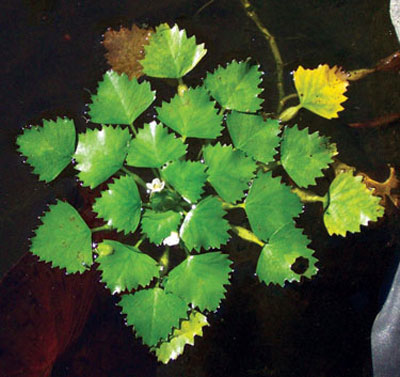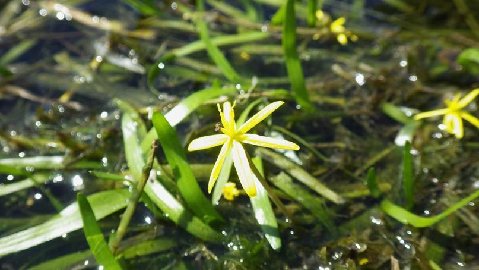FODMers and friends learned about the importance, abundance and distribution of submerged aquatic vegetation (SAV) in the Potomac River on September 13, 2017, when Dr. Nancy Rybicki, U.S. Geological Survey aquatic plant biologist and hydrologist, spoke to 55 attendees.
A few highlights from her talk:
- SAV is an indicator of estuary health and SAV has rebounded in recent years.
- Among other ecological services it provides, SAV is a refuge for fish and food for waterfowl.
- Native SAV was abundant in the river in 1916, but by 1939, it had declined significantly. By the 1970s, the freshwater, tidal Potomac River was essentially devoid of SAV.
- The major cause of the decline was likely nutrients from sewage treatment plants which fueled algal blooms that blocked light that vegetation needs to grow.
- When area sewage treatment plants, chiefly the Blue Plains Advanced Wastewater Treatment Plant in Washington, D. C., upgraded their technology, nutrient loads declined and light penetration increased, helping SAV return.
- From 1990 to 2007, native SAV increased ten-fold in abundance and it is still increasing. In that time period, plant diversity increased as well.
Dr. Rybicki’s talk and a helpful guide to common aquatic plant species in the Potomac River are featured in the December 2017 Potomac Basin Reporter published by the Interstate Commission on the Potomac River Basin. Visit https://www.potomacriver.org/news/potomac-basin-reporter-winter-2017/.
Non-native Water Chestnuts Have Returned
 Water chestnut. Photo by USGS.Dr. Rybicki also described her research on the water chestnut, an aquatic plant native to Eurasia. It was brought to the U.S. in the 1800s, reported in the Potomac River in the 1920s and spread from Washington, D.C., to Quantico, Virginia. In the 1940s, the U.S. Army Corps of Engineers (COE) eradicated it from the Potomac River. However, in 2014, a new type of water chestnut was found in the tidal Potomac River in Pohick Bay in Fairfax County. “It spreads quickly on the surface and potentially could shade out the recently established, diverse populations of SAV,” she explained, and it has been found in Prince William and Fairfax County farm and stormwater control ponds. Dr. Rybicki and her colleagues are analyzing its genetic, fruit and flower characteristics in an effort to determine which species are in the Potomac River system.
Water chestnut. Photo by USGS.Dr. Rybicki also described her research on the water chestnut, an aquatic plant native to Eurasia. It was brought to the U.S. in the 1800s, reported in the Potomac River in the 1920s and spread from Washington, D.C., to Quantico, Virginia. In the 1940s, the U.S. Army Corps of Engineers (COE) eradicated it from the Potomac River. However, in 2014, a new type of water chestnut was found in the tidal Potomac River in Pohick Bay in Fairfax County. “It spreads quickly on the surface and potentially could shade out the recently established, diverse populations of SAV,” she explained, and it has been found in Prince William and Fairfax County farm and stormwater control ponds. Dr. Rybicki and her colleagues are analyzing its genetic, fruit and flower characteristics in an effort to determine which species are in the Potomac River system.
Volunteers led by John Odenkirk, Virginia Department of Game and Inland Fisheries (VGIF), harvested it in Pohick Bay in 2014 and subsequent years and more volunteers are needed to spot and collect it in ponds and rivers. If you see it, report it to Mr. Odenkirk at 540-899-4169 or


